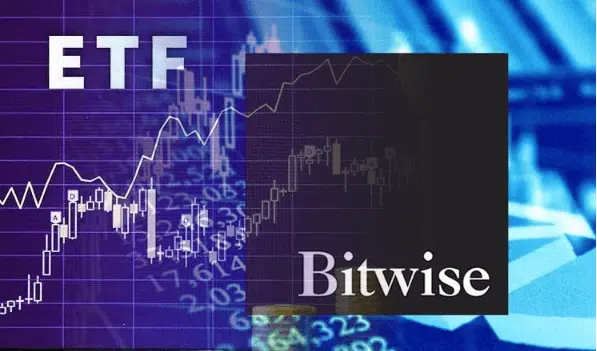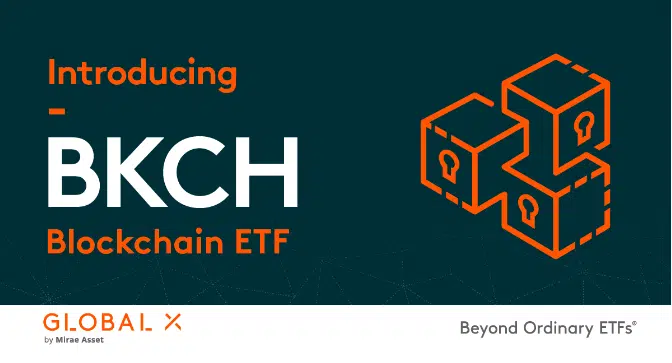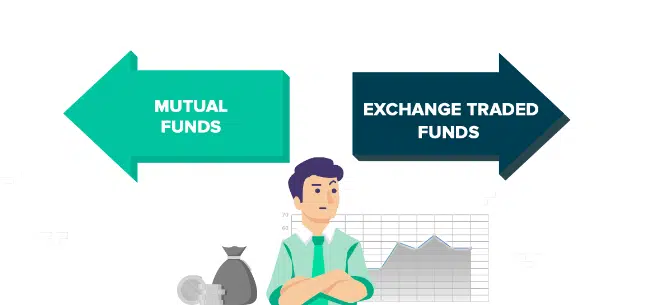TLDR
Cryptocurrency funds or crypto ETFs help investors to invest or track the price of cryptocurrencies without owning digital coins or tokens. It serves as a safety net for its users.
The first and most commonly used crypto ETF is the “Bitcoin ETF.”
The top ETFs to invest in are:
- Bitwise Crypto Industry Innovators ETF
- VanEck Bitcoin Strategy ETF (XBTF)
- Valkyrie Bitcoin Miners ETF
- Global X Blockchain ETF
- VanEck Digital Transformation ETF
Introduction
Traditional investments have morphed over the years to accommodate digital currencies and assets. Many investors have diversified their traditional portfolios for trading crypto assets, like Bitcoin futures. This is the case with exchange-traded funds (ETFs). Like mutual funds, ETFs pool investments, but they are designed to track the performance of a specific asset, commodity, or index.
In contrast to mutual funds, ETFs offer more dynamism. Investors can buy or sell them at any point during trading on traditional exchange platforms, similar to trading individual stocks. This flexibility makes ETFs a desirable investment option.

Over the years, ETFs have faced restrictions from financial regulatory bodies. Some of these bodies are the Securities and Exchange Commission(SEC). It is now commonplace to find the SEC rejecting cryptocurrency exchange-traded funds filled by mutual fund companies.
Different speculations about the SEC intending to approve ETFs, especially Bitcoin funds, have arisen. But no concrete plan has been put in place.
Blackrock’s recent ETF filling has sparked a glimmer of hope in the crypto community. The firm is known to have a good track record of approvals from the SEC.
What is a Cryptocurrency ETF?
Cryptocurrency exchange-traded funds are a stack of cryptos that track digital coins’ prices.
Crypto funds exist to provide a form of safety and convenience to investors. It allows them to access these cryptocurrencies without being burdened by the challenges of owning them. They are traded daily, and their share price fluctuates based on the crypto market, like regular stocks.
5 Best Cryptocurrency ETFs to Invest in
A wide range of ETFs can be invested in cryptocurrency futures now. Still, it is essential to factor in the lag in the SEC’s registration and approval of cryptocurrency funds.
Below are 5 best and most reliable Crypto ETFs you can invest in 2024:
1. Bitwise Crypto Industry Innovators ETF (BITQ)

One of the top and largest crypto asset managers in the world is Bitwise. It created the index crypto fund (OTCQX: BITW). The index fund comprises crypto-focused equity and futures ETFs. Investors can access Crypto ETFs like Bitcoin, Ethereum, DeFi, and the Metaverse on Bitwise.
As of June 21, 2023, the net ratio of Bitwise is 2.5%, while the assets under management total $516 Million.
Bitwise launched 10 Crypto index funds in November 2017. The funds will get diversified exposure to Bitcoin and other top cryptocurrencies.
Bitwise functions by tracking an Index comprised of the ten most valued cryptocurrencies. The index undergoes active screening and vigilant monitoring to mitigate specific risks. Additionally, it gets regularly adjusted monthly, with weights based on market capitalization to maintain its balance.
It runs similarly to traditional investment exchanges by ensuring security and simplicity. Its shares are tradable in brokerage accounts.
2. VanEck Bitcoin Strategy ETF(XBTF)

VanEck Bitcoin Strategy ETF is a Bitcoin fund that tracks the price and yield performance of the MVIS Global Digital Assets Equity Index. This fund does not invest directly in Bitcoins but in Bitcoin futures contracts and ETFs. It also has Bonds, Cash, and Stocks available for investors.
Known for its competitive expense ratio, XBTF is an ideal choice for institutional investors who prioritize cost-effectiveness in their investment strategies. It came into inception on the 15th of November, 2021.
The Trust Company and the State Street Bank are the Custodians of XBTF.
As of June 21, 2023, the net ratio of VanEck’s Bitcoin Strategy ETF is 0.76%, while the assets under management equal $ 44.89 million.
3. Valkyrie Bitcoin Miners ETF (NASDAQ: WGMI)

WGMI funds are available through the Nasdaq exchange. They invest in public companies in the Bitcoin hardware and software mining industry. The fund does not directly invest in cryptocurrencies. Instead, it invests in crypto mining companies. 50% of its profit is made from Bitcoin mining.
As of the 21st of June,2023, WGMI has a Net asset (NA) value of $11,870,829.32 and a total expense ratio of 0.75%.
Some mining companies WGMI has holdings in include:
- Stronghold Mining.
- Argo Blockchain.
- Marathon Digital Mining.
- Bitfarms.
- Hive Blockchain.
- CleanSpark.
- Riot Blockchain.
The funds can be accessed via different providers. They include Fidelity, Charles Schwab, Interactive Brokers, Robinhood, TD Ameritrade, and E-Trade.
4. Global X Blockchain ETF (BKCH)

Global x Blockchain invests in companies focused on blockchain technology and digital assets.
These include Blockchain applications, Blockchain & digital asset integration, Digital asset mining, Blockchain & digital asset transactions, and Blockchain & digital asset management hardware
Its top holdings include Coinbase, Northern Data, Marathon Digital, Galaxy Digital Holdings, Hut & Mining Corp, and Riot Blockchain.
BKCH’s investments are in financials, communication services, and information technology.
As of 21st June 2023, the total Expense Ratio of the BKCH is 0.50%, while the NA value is $77.76 million.
BKCH tracks the Solactive Blockchain Index. It tracks the index to provide investment results in tandem with its price and yield performance before fees and expenses
5. VanEck Digital Transformation ETF (DAPP)

The VanEck digital transformation ETF tracks stocks on the MVIS Global Digital Assets Equity index (which lists companies focusing on digital transformation investments). This crypto ETF differs from most ETFs, as they are mainly actively managed. DAPP has its rebalancing done every quarter.
As of June 21, 2023, the net assets are $ 39.43 million, while the total expense ratio is 0.50%. It launched on the 4th of December, 2021.
DAPP invests in companies that transact and trade in the digital assets economy. They include digital asset exchanges, crypto mining, and other infrastructure-based companies. It ensures that the companies it invests in have the potential of realizing at least 50% of revenue from digital assets economies.
Its major holdings are Coinbase Global, Block Inc., Iris Energy, Silvergate Capital, Riot Blockchain, and Microstrategy.
How Do Cryptocurrency ETFs Work?
Crypto-based ETFs work in a similar pattern to traditional stocks. Crypto companies can own a specific amount of crypto tokens and then break down the ownership of these tokens into shares that investors buy.
As an investor, there is no responsibility for owning digital assets; the company bears the burden. Investors buy and sell these underlying assets on stock exchanges, hoping they appreciate.
The exchange-traded fund tracks and purchases the funds, and the company allocates shares to investors. A Bitcoin ETF, for instance, would track Bitcoin prices and purchase and hold Bitcoin. Shares of its holding would then be offered to investors on an exchange.
Crypto funds differ from the other ETFs because they do not own the underlying assets. Instead, it owns the crypto stocks, futures contracts, options, and other instruments.
Crypto-based ETFs, like the Bitcoin strategy ETF, can be categorized into physical-backed cryptocurrencies and Synthetic Variants. The physical-backed category has been discussed earlier. The synthetic variant tracks the derivatives of the underlying cryptocurrencies. It mimics the real price of the crypto derivatives.

What are the Benefits of Cryptocurrency Exchange-Traded Funds?
Investing in Crypto ETFs comes with its benefits despite existing risks.
Ease
They are designed to help investors easily understand the crypto market. Investors do not have to endure the stress of purchasing coins, opening a crypto account, or getting a digital wallet – which helps those interested in ETFs invest without a hassle. It also saves them from expenses like hidden charges and custody charges.
Security
Cryptos are known to be susceptible to hacking, causing owners of these digital assets to be at a security risk. Crypto ETFs protect an investor from these security risks as they do not own any digital assets.
Access to Limited Tokens
Not all Crypto tokens have the infrastructure for investors to buy and sell directly. The implication is that some tokens can be purchased on specific crypto exchanges while others cannot. Crypto ETFs help the investor diversify by reducing the cost of purchasing the tokens from different crypto exchanges.
Regulated
Crypto funds are regulated by the Securities and Exchange Commission (SEC). They are also regulated by the Commodities and Futures Trading Commission (CFTC). This reduces the risks of scams, fraud, and investment failures.
Are Cryptocurrency ETFs Safe?
Crypto exchange-traded funds are regulated and monitored closely by regulatory companies. This helps in curbing illegal activities and abuse in the cryptocurrency markets. For first-time investors in blockchain ETFs, crypto ETFs like the Bitcoin ETF are safer.
Despite the available regulations of crypto ETFs, there are still associated risks that come with investing in them. The choice of funds to dabble into crypto ETFs is restricted and susceptible to hacking. Crypto ETFs, especially physical-backed funds, are not exempt from the crypto market’s volatility.
How to Invest in Crypto ETFs
Investing in a crypto ETF correctly is the first step in harnessing its benefits.
Choose Your Broker
Choosing a trusted and reliable trading platform is essential when investing. These trading platforms or applications stand as brokers. In choosing your preferred ETF broker, you need to consider different factors.

Some examples are the commission and fees they charge, the selection of assets available, and the broker’s platform and tools.
Crypto market exchanges are limited to digital currencies. Other factors to consider when choosing a broker are;
- The quality of customer service they offer.
- Available sign-up bonuses and other incentives to save you money.
- Zero commissions and the spreads they offer.
Decide how much Money You Want to Invest
Have an investment budget and decide on the total percentage of the budget you want to allocate to crypto ETF investment products. Having a budget would streamline the wide variety of options and help focus on the crypto funds suitable to you.
Fund Your Brokerage Account
The next step is to fund your brokerage account; the broker usually requires a minimum deposit amount. Most brokers accept payments through Credit and Debit cards, PayPal, and Bank Transfers.
Place Market Order for Your Desired Crypto ETF
After your account has been funded, you can place a market order for your desired Crypto ETF. The different crypto funds are usually in a drop-down search box on the trading platform.
Once you have selected the Crypto ETF, click buy and select the maximum amount of shares you intend to purchase based on your budget.
What is the Difference Between Cryptocurrency ETFs and Mutual Funds?

There are existing intersections between mutual funds and exchange-traded funds. Crypto ETFs track the price of one or more digital tokens, similar to how mutual investment funds operate. ETFs and mutual funds hold stocks, bonds, and other valuable commodities. Investment accounts can be used to trade both mutual investment funds and crypto funds.
Despite these similarities and intersections, there are still some disparities highlighted below:
Time Limitations
On the other side of the crypto trade exchange is usually another trader, not a fund manager. There are no time limitations in trading ETFs. You can trade ETFs at any point during a trading session and at any price available based on existing market conditions.
Unlike mutual investment funds, share prices of ETFs fluctuate throughout the trading day.
Mutual funds have a “Once a day” trading timeline. Unlike exchange-traded securities, mutual fund share prices do not fluctuate daily. The fund sums up the total assets in its portfolio. The total assets are “the net asset value (NAV).”
The market closes at 4 p.m. Eastern Time each business day. The result is that you can only trade mutual investment funds at the end of the day.
Minimum Investment Criterion
ETFs do not have a minimum investment criterion. They also do not have limited holding periods, especially in tracking international assets. A Mutual investment fund, in contrast, has a minimum holding period and investment cap.
Pricing
The way relationships work in ETF transactions makes them cheaper than the mutual investment fund. Most ETFs make use of index tracking.
ETFs try to match the index’s returns and price movements by assembling a portfolio that matches its constituents closely.
Crypto funds are cheaper than mutual funds. This is because of the relationship dynamics in which they operate. They are mostly passively managed. A human fund manager does not manage it; computer algorithms run it.

Although they can also track indexes, mutual investment funds are usually actively managed. They are more costly than ETFs because tracking and beating indexes with actively managed funds costs a lot. There would be a need to expend money on market analysts, company visits, and industry findings.
ETF providers ensure the fund’s price closely aligns with the index’s net asset value. To achieve this, the supply of shares is adjusted by creating new ones or redeeming the old shares. If the shares are still pricy, ETF providers create more supply to lower the price.
Crypto ETFs are quite recent and still face challenges getting regulated by the SEC. They are cheaper and are gaining more popularity than mutual investment funds. Mutual funds have existed since the 1920s and are still very much relevant.
Final Thoughts
Investing in exchange-traded funds is a good option if you want to partake in the growing crypto economy.
Cryptocurrency exchange-traded funds help investors, particularly those new to the crypto ecosystem, trade easily without owning digital tokens.
It saves you from the stressful process of creating new digital wallets and paying charges. These crypto funds also serve as a form of security, guarding you from being susceptible to fraud and scams.
Before investing in exchange-traded or mutual investment funds, you must evaluate and weigh the risks accompanying them. Use investment strategies that consider the crypto industry’s volatility with high-end risks. You should also consider that you technically do not own any cryptocurrency.
A cryptocurrency exchange-traded fund (ETF) is a fund that contains cryptocurrencies and also tracks the price of one or more digital tokens. They operate similarly to mutual investment funds.
Yes, you can buy crypto ETF. There are different crypto funds that you can buy. Funds like Ethereum ETF, Bitcoin ETF, crypto minings, and even crypto exchanges are available to investors. You can buy a crypto ETF from a trusted broker.






